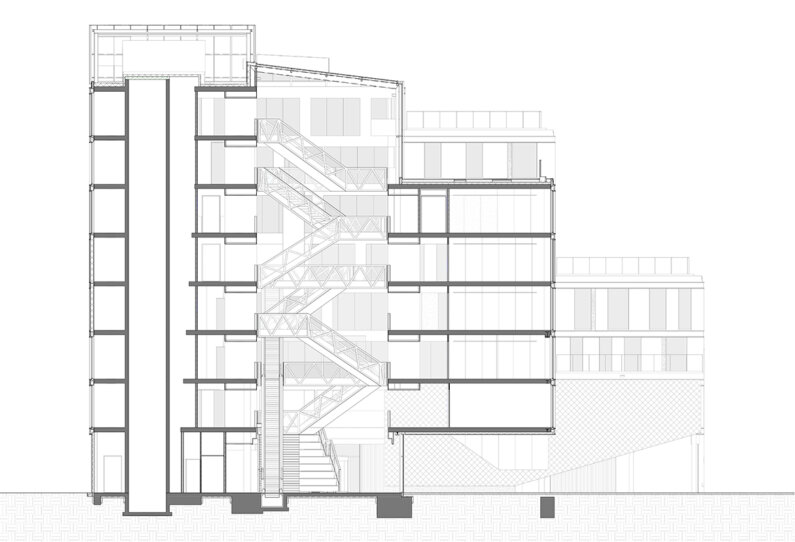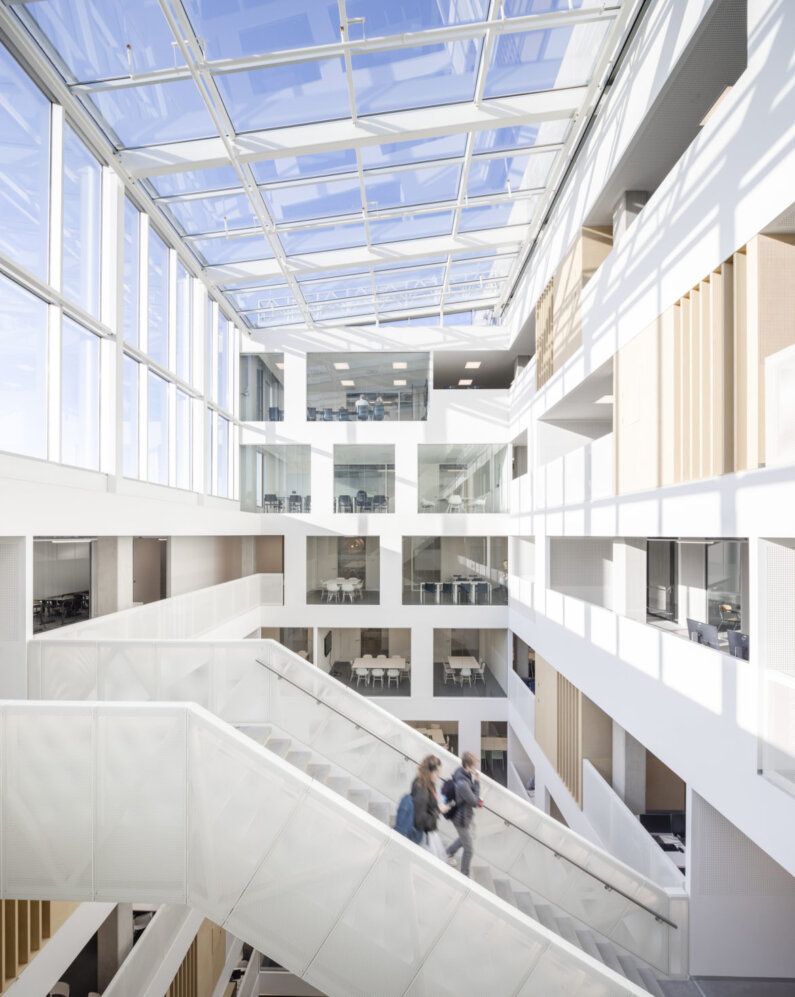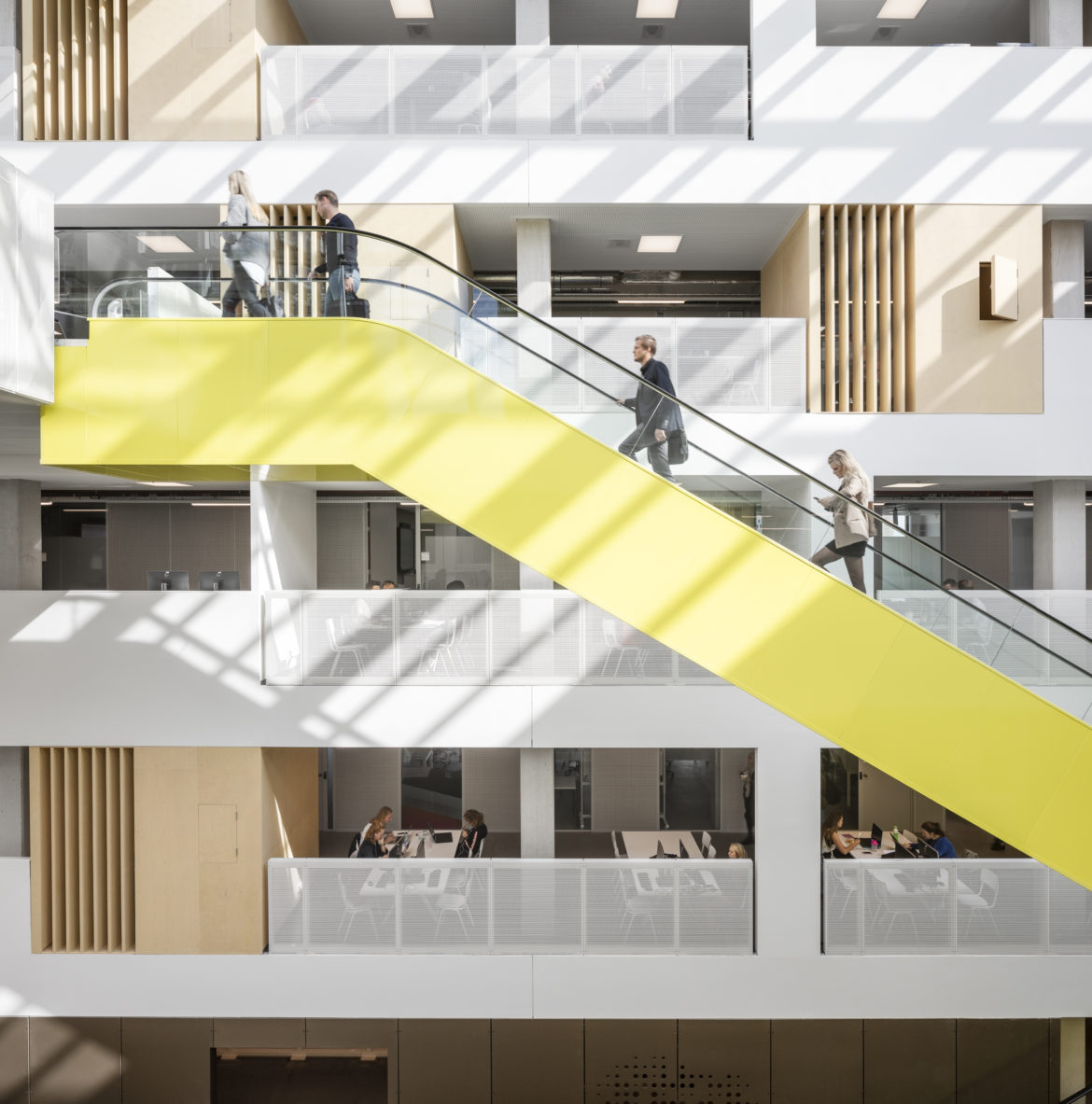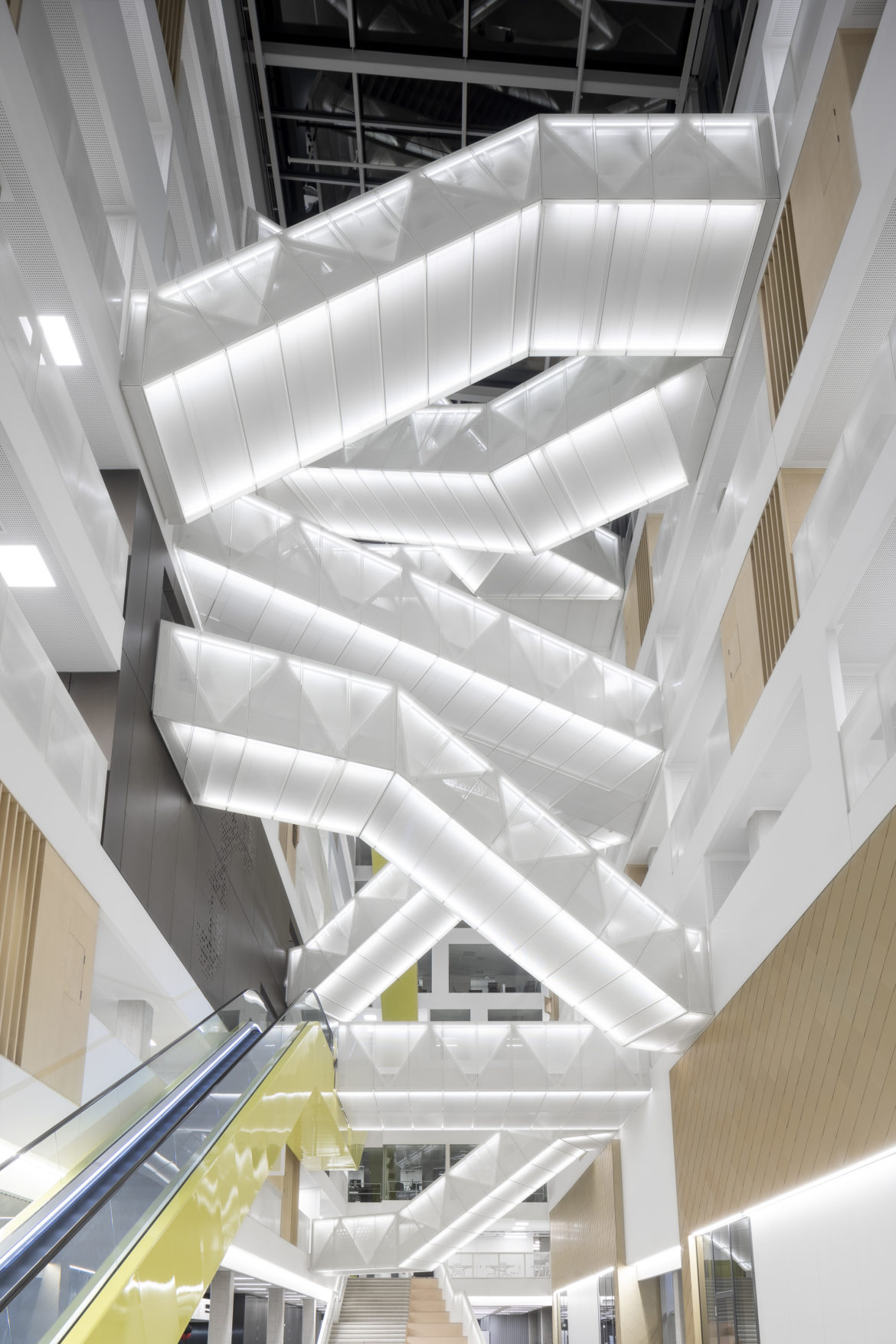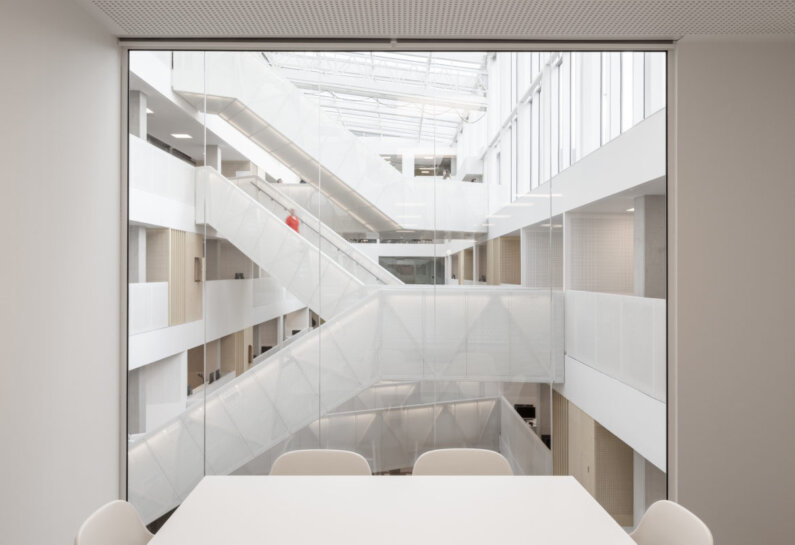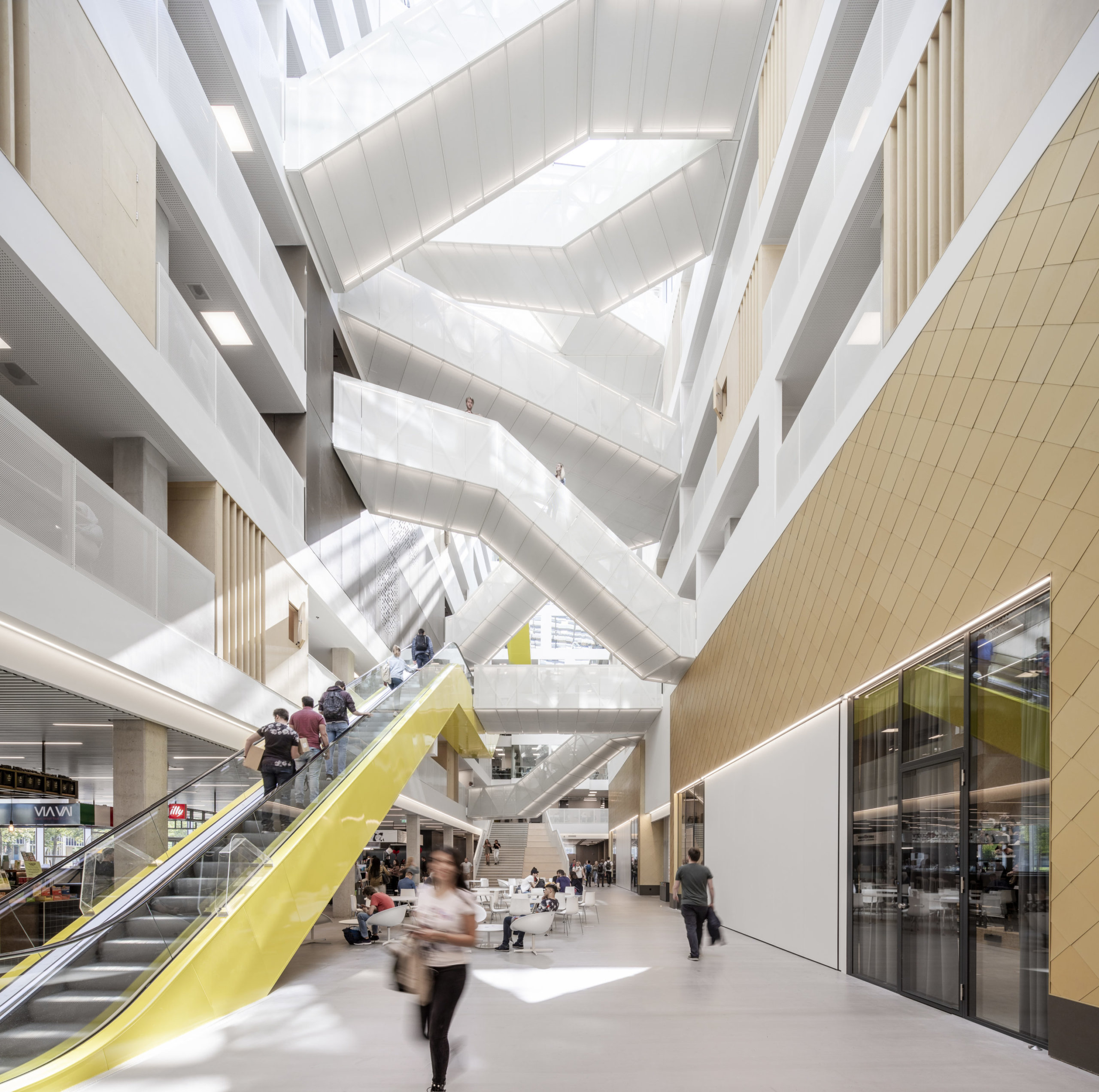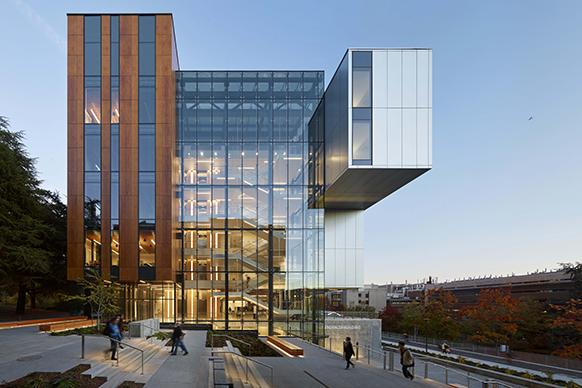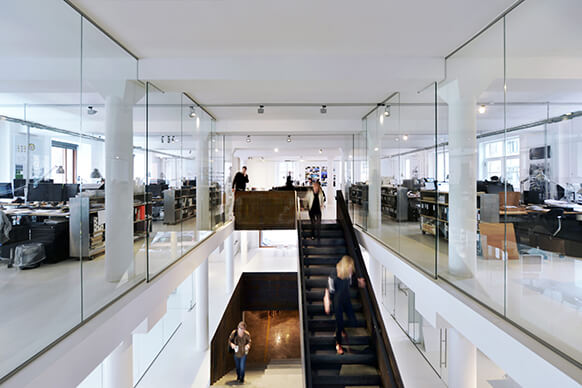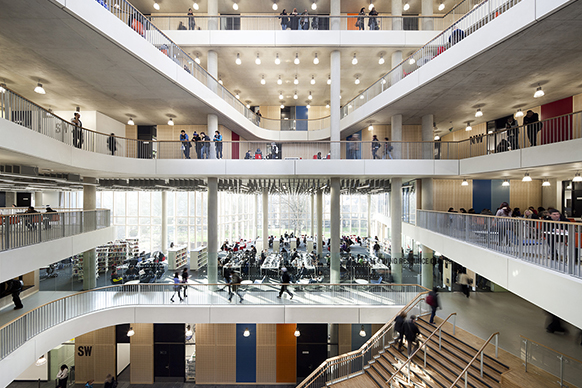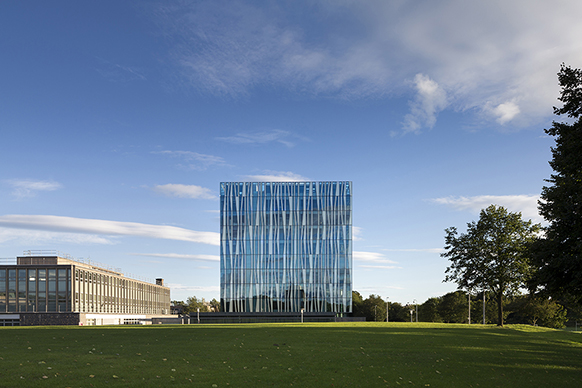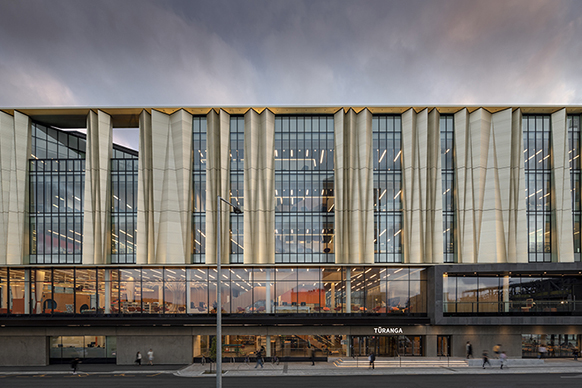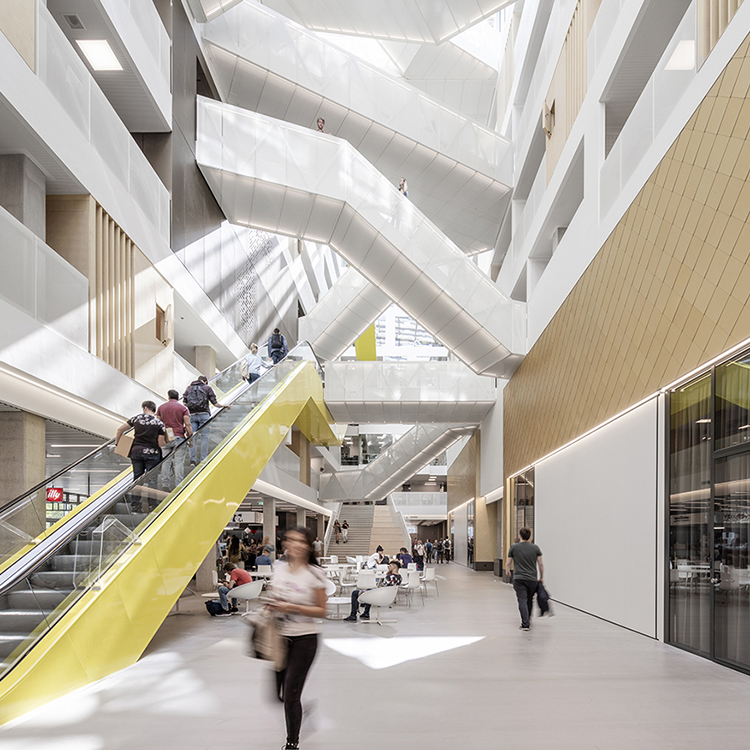
HU University
Until four years ago, the HU University of Applied Sciences, a school founded in 1995 through the merger of several previously independent institutions, was spread across some 30 buildings in Utrecht, The Netherlands. The university prioritized consolidating its footprint into five adjacent buildings on its Utrecht Science Park campus, and Schmidt Hammer Lassen Architects’ new structure is the last of the five to be completed. The Heidelberglaan 15 building is home to eight educational institutes in the economics, management, information communication and technology, and media and communication sectors.
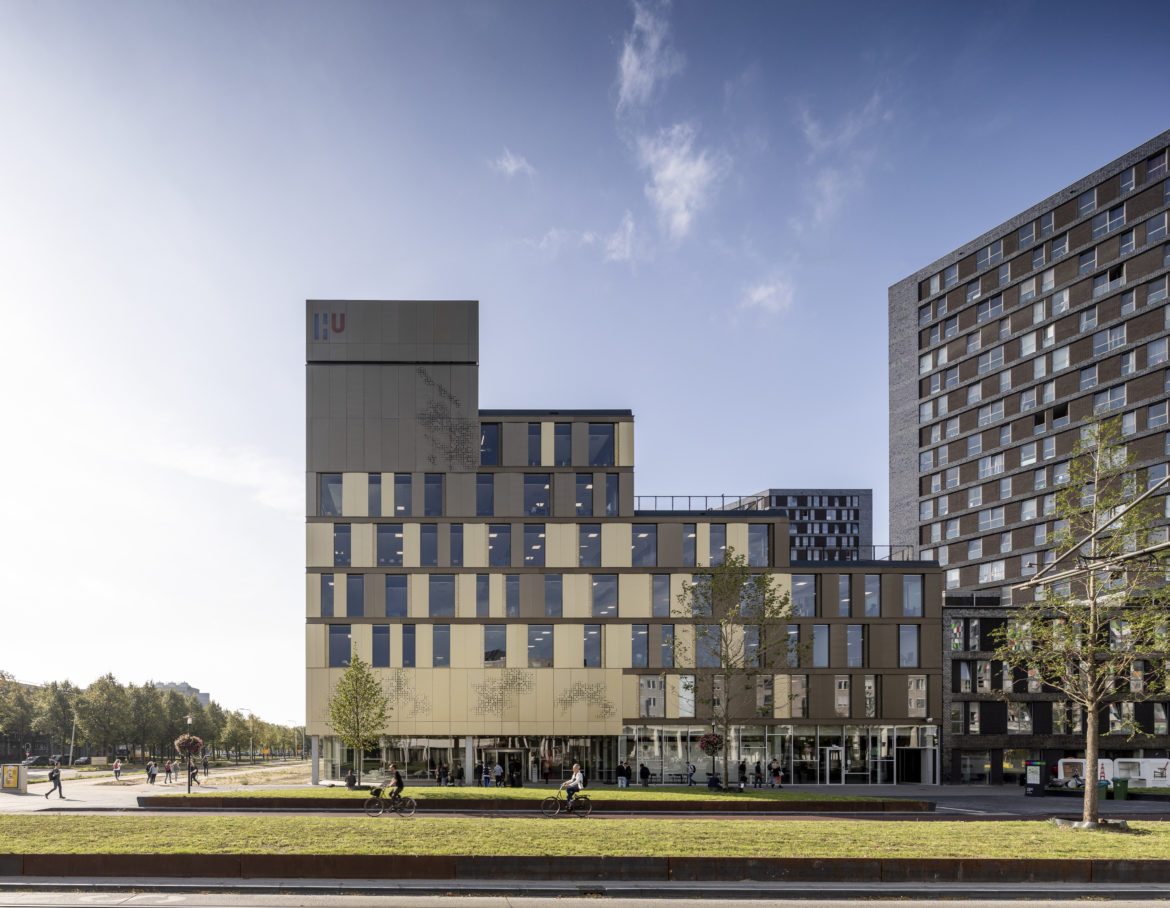
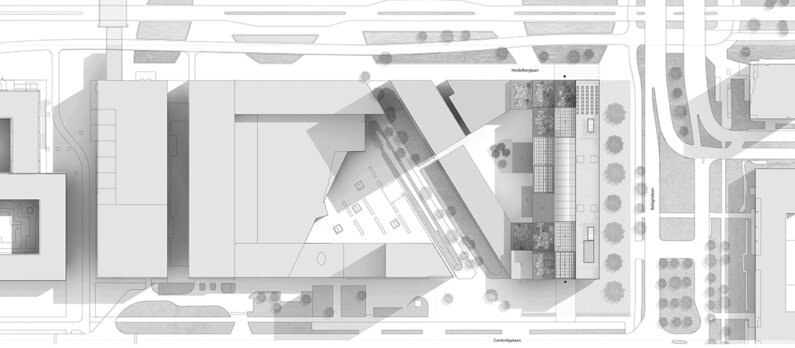
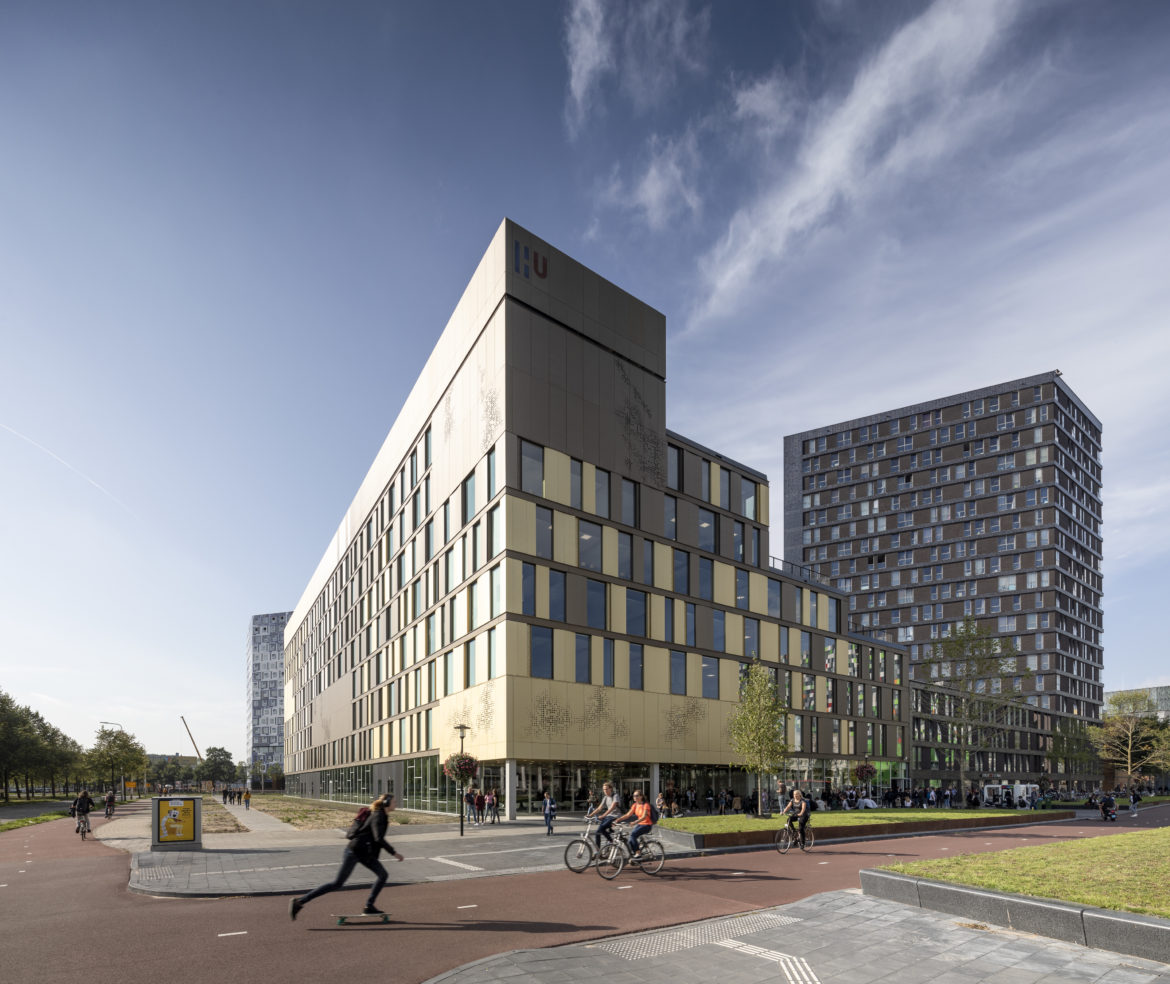
The HU University of Applied Sciences was a spatial design challenge with more than 5,800 students, faculty and visitors moving through the 3,000-square-metre footprint of the building daily.
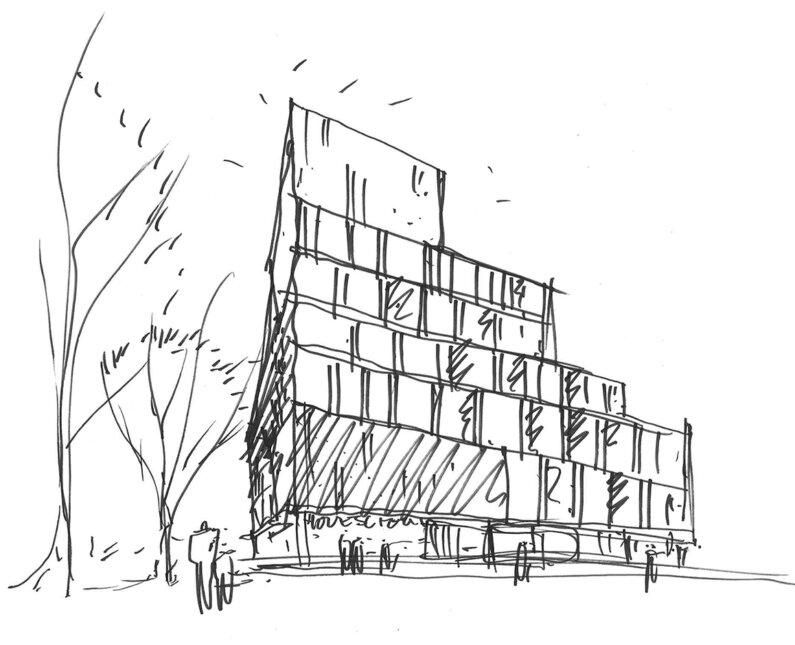
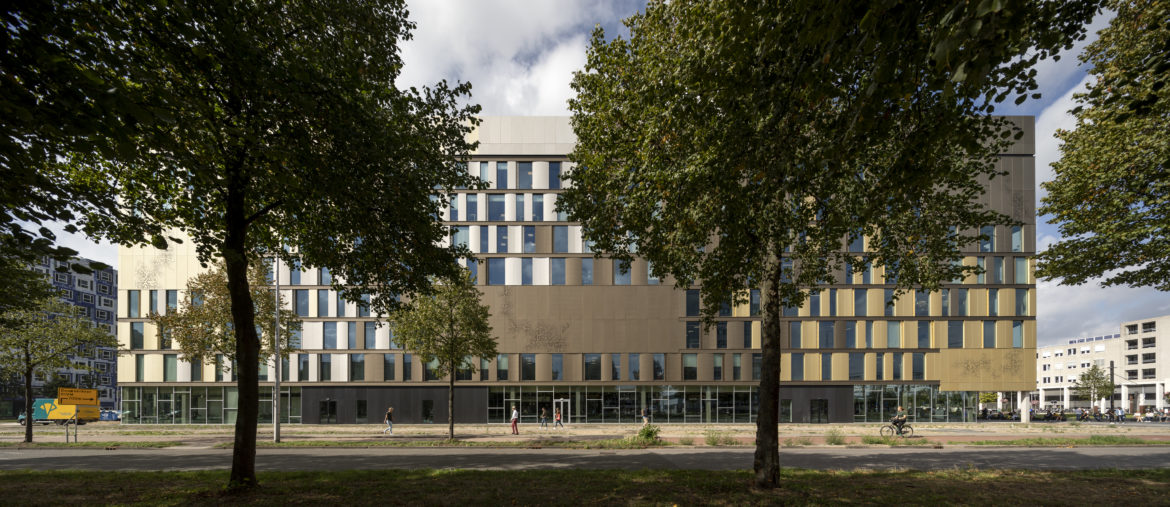
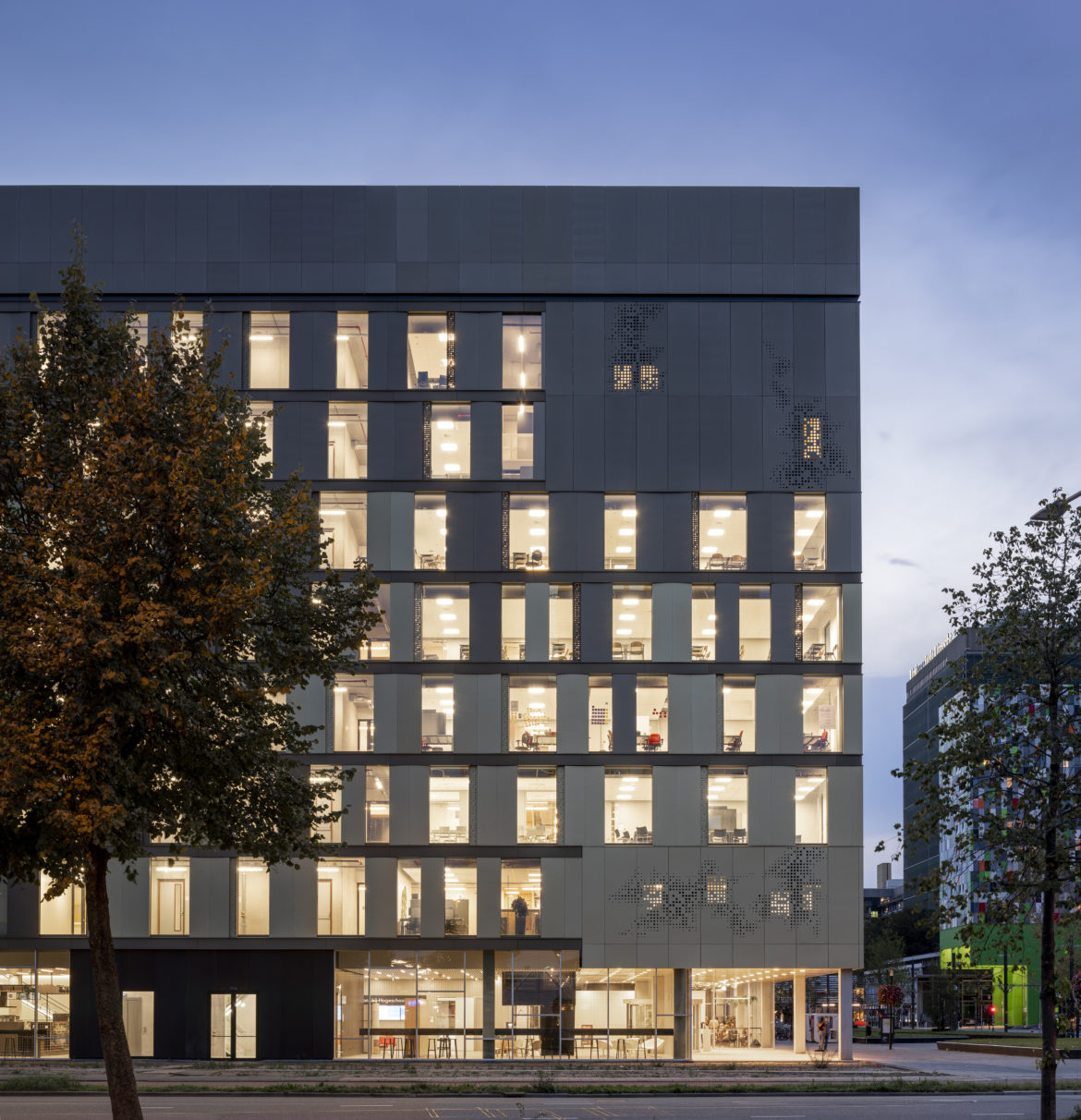
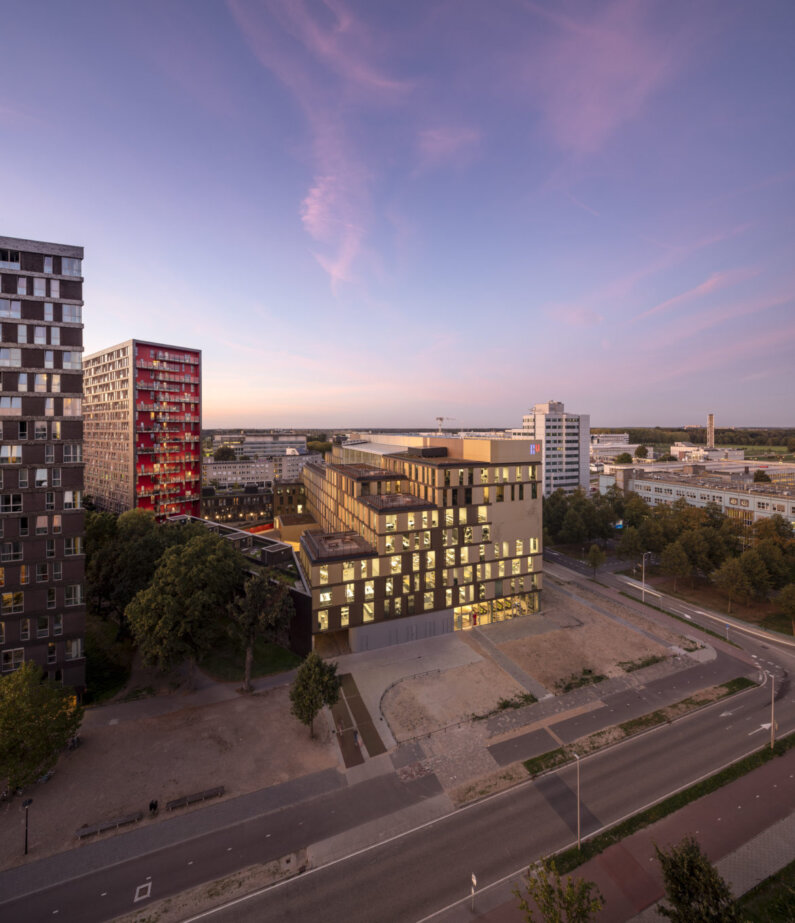
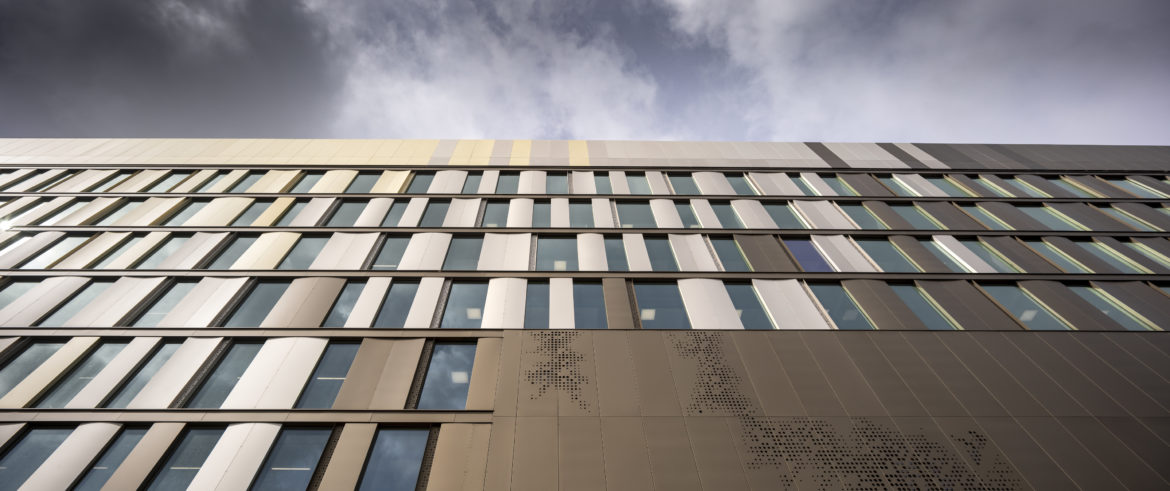
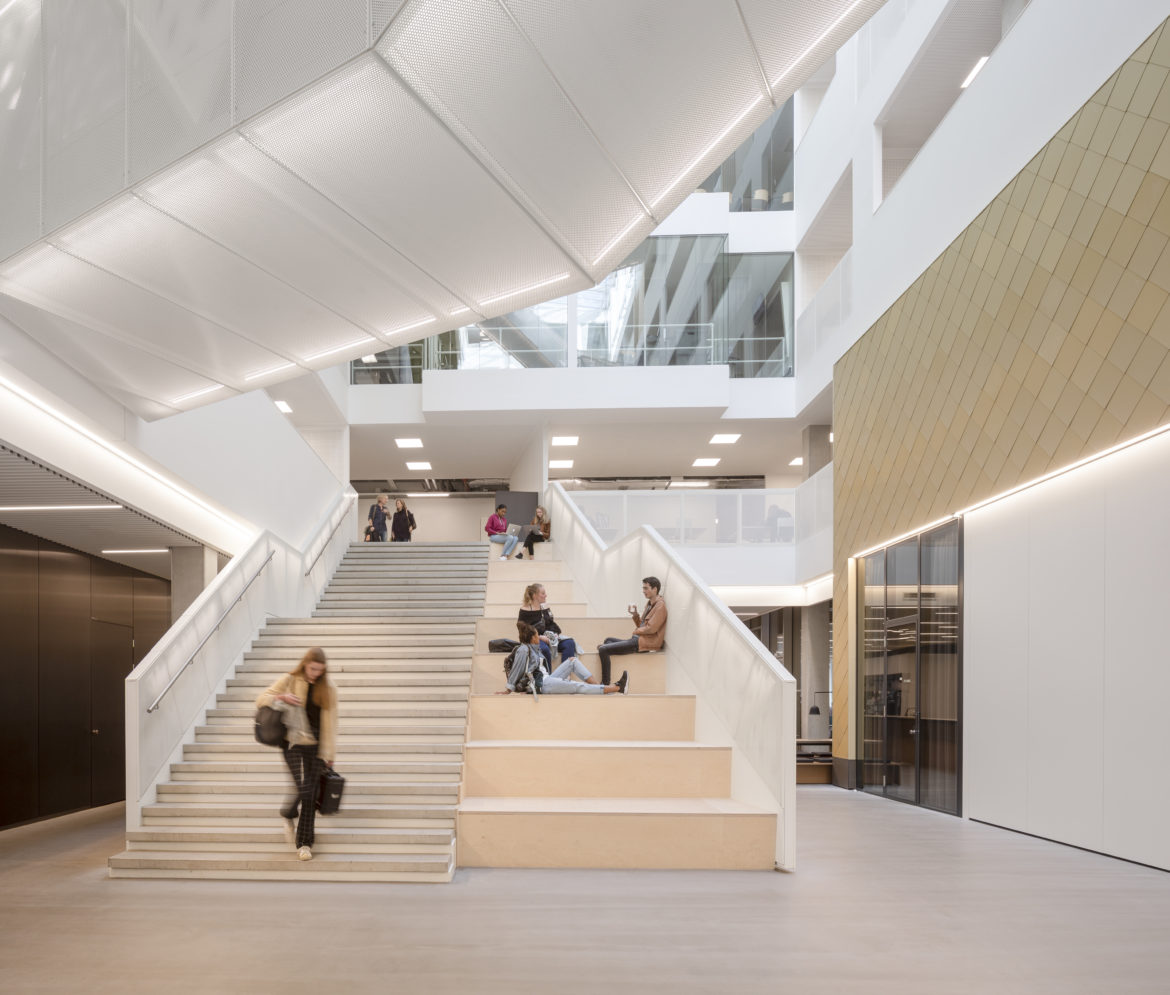
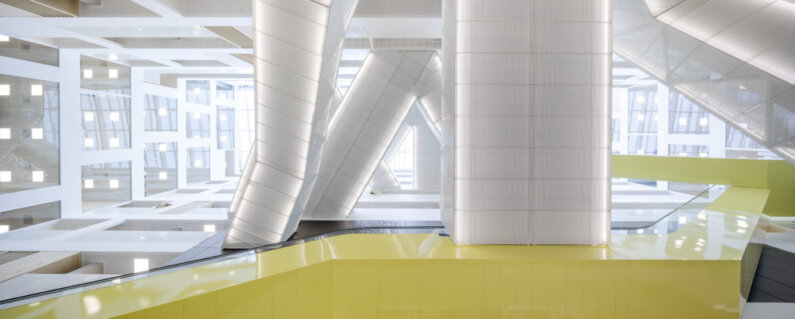
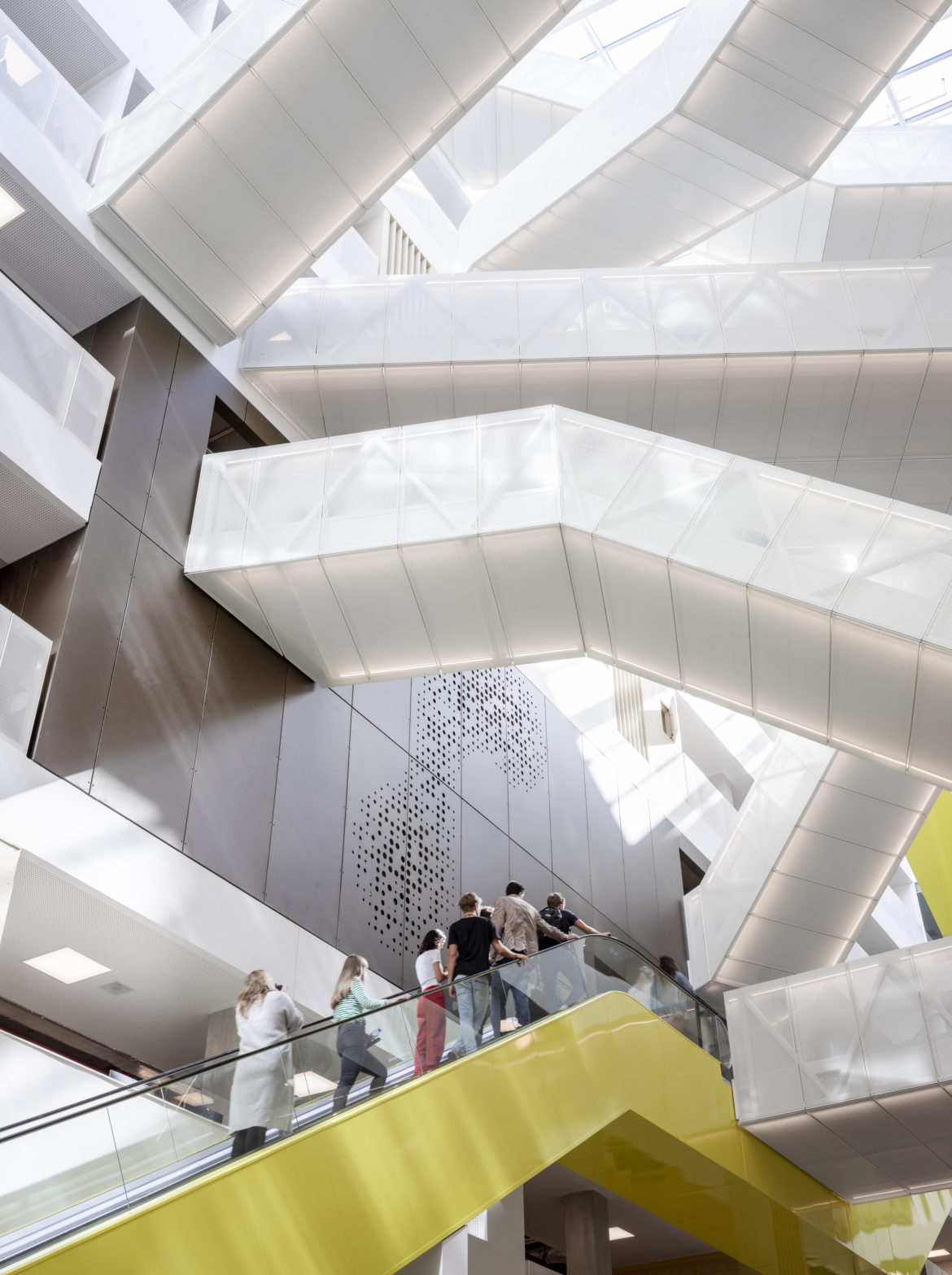
The white, off-white and timber color scheme of the university’s interior is accented with a pop of chartreuse that lines the three escalators that transverse the atrium. The exterior and interior are linked by the moiré pattern of the aluminum cladding that can be found not only on the exterior façade, but also on the internal staircases.
